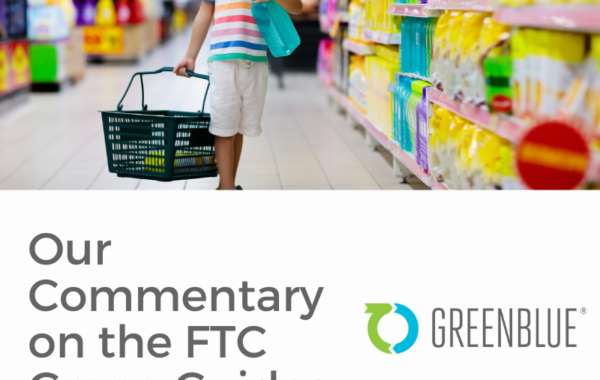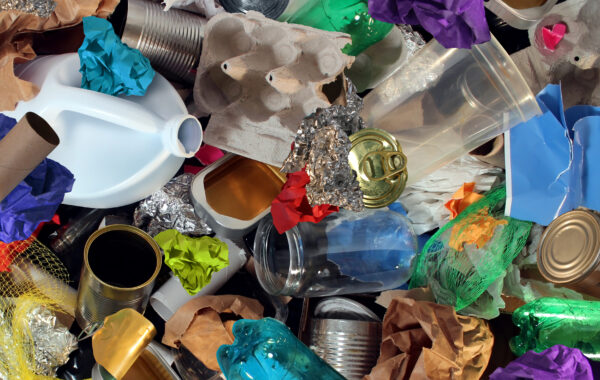January 18, 2022
And what does it mean for sustainable packaging?
While the terminology is not new, recently, the term “environmental justice ” has become more popular in everyday sustainability conversations, most recently in the Environmental Protection Agency’s (EPA) report on a National Recycling Strategy. As we work to build a deeper understanding and a more sustainable future, integrating the terminology of “environmental justice ” into our discourse in the packaging industry necessitates an understanding of the meaning of the term in theory and in practice.
According to the EPA, environmental justice is, “is the fair treatment and meaningful involvement of all people regardless of race, color, national origin, or income with respect to the development, implementation, and enforcement of environmental laws, regulations and policies.” To break it down into its two pieces, the “environmental” aspect refers to the type of policy or regulation being enforced and the “justice” aspect refers to how the stakeholders of the policy or regulation should be treated. The EPA defines fair treatment to mean, “no group of people should bear a disproportionate share of the negative environmental consequences resulting from industrial, governmental and commercial operations or policies.”
The environmental justice movement originated in the 1960 as part of the civil rights movement but did not fully gain its own identity until the 1982 Sit-in against the Warren County, NC PCB Landfill. Environmental justice is a necessary framework for the development of environmental policy because of historic injustices to Black, Indigenous, and other marginalized communities in the name of environmental policy. The regulations, or lack thereof, surrounding waste sites and pollution are policy choices and policy choices are not accidents.
Implementation of Environmental Justice
Evidence for the necessity of environmental justice is overwhelming. Examinations of the location of waste management sites (and the hazards that accompany that waste) have found that communities of color are much more likely to be in close proximity to the waste management sites than White communities. Likewise, differing levels of exposure to air pollution between Black and White communities are believed to be responsible for differences in cancer rates caused by that pollution in the region of Louisiana known as Cancer Alley. These outcomes must be avoided in future policy making, and strong environmental justice frameworks are necessary to avoid repeating historic injustice. One example of implementation of the environmental justice framework in policy is the work being done by the New Jersey Department of Environmental Policy’s Office on Environmental Justice. This work includes the extensive mapping of public health and environmental health at the community level enabling data-backed decision making. This information can be used in the early stages of planning to determine whether marginalized communities are likely to be disproportionately harmed.
This leads to the difficult-to-answer question of: what does it look like to implement environmental justice frameworks into the development of more sustainable packaging? While individual circumstances have nuanced differences making it difficult to make blanket recommendations that cover all materials, processes, and strategies, there are some ways of operating that are universal.
First and foremost is understanding who is impacted by the choices made in the design and the development of the packaging. These stakeholders likely include the residents of the location of the production facilities and consumers of the products. However, that list is not exhaustive, and depending on the processes being evaluated, stakeholders could also include people who reside near resource extraction sites for the raw materials or people who reside downstream from the plant with water sources that could be impacted by upstream decisions. End of Life for municipal solid waste, including: landfills, mechanical and chemical recycling facilities, incinerators, and the externalities associated with those facilities is also ripe for discussion in the packaging sector as we strive to use resources more responsibly.
Understanding who is impacted is crucial when it comes time to evaluate whether or not they are being treated in an equitable manner or if business practices need to be altered. Looking only to what is legally allowable when striving to make ethical and just decisions is insufficient when regulations do not equally protect all people and environments. For example, while it might be legally allowable to build a pipeline, the preferences of the Indigenous people who have a sacred, ancestral connection to that land should be prioritized. In addition to knowing who the stakeholders are, listening to the stakeholders by taking their environmental health concerns seriously, is necessary.
Material Health
Second, material health needs to be a priority. Packaging manufacturers should prioritize choosing safe chemicals to begin with, alongside making sure any substitutes for hazardous chemicals are safe as well, not just under-scrutinized. GreenBlue has multiple resources for those interested in learning more about material health and implementing material health best practices. First, there is CleanGredients: a database of cleaning product chemical ingredients that have been pre-approved to meet the U.S. EPA’s Safer Choice Standard. Additionally, there is the Essentials of Material Health online course as part of the SPC’s Essentials of Sustainable Packaging online training program which provides education and guidance on best practices in material health and the Safe and Circular Materials Collaborative to contribute to the development of a registry of verified information on materials and functional additives to support safe and circular alternatives.
Ultimately, the goal of the environmental justice movement is a just transition from an extractive and linear economy to a regenerative and circular future. The just transition means no group bears a disproportionate amount of the environmental, social, or economic costs. The packaging industry can choose to be a part of this just transition by moving away from the status quo through prioritizing material health at all stages of package development and circularity in our systems and package designs.





